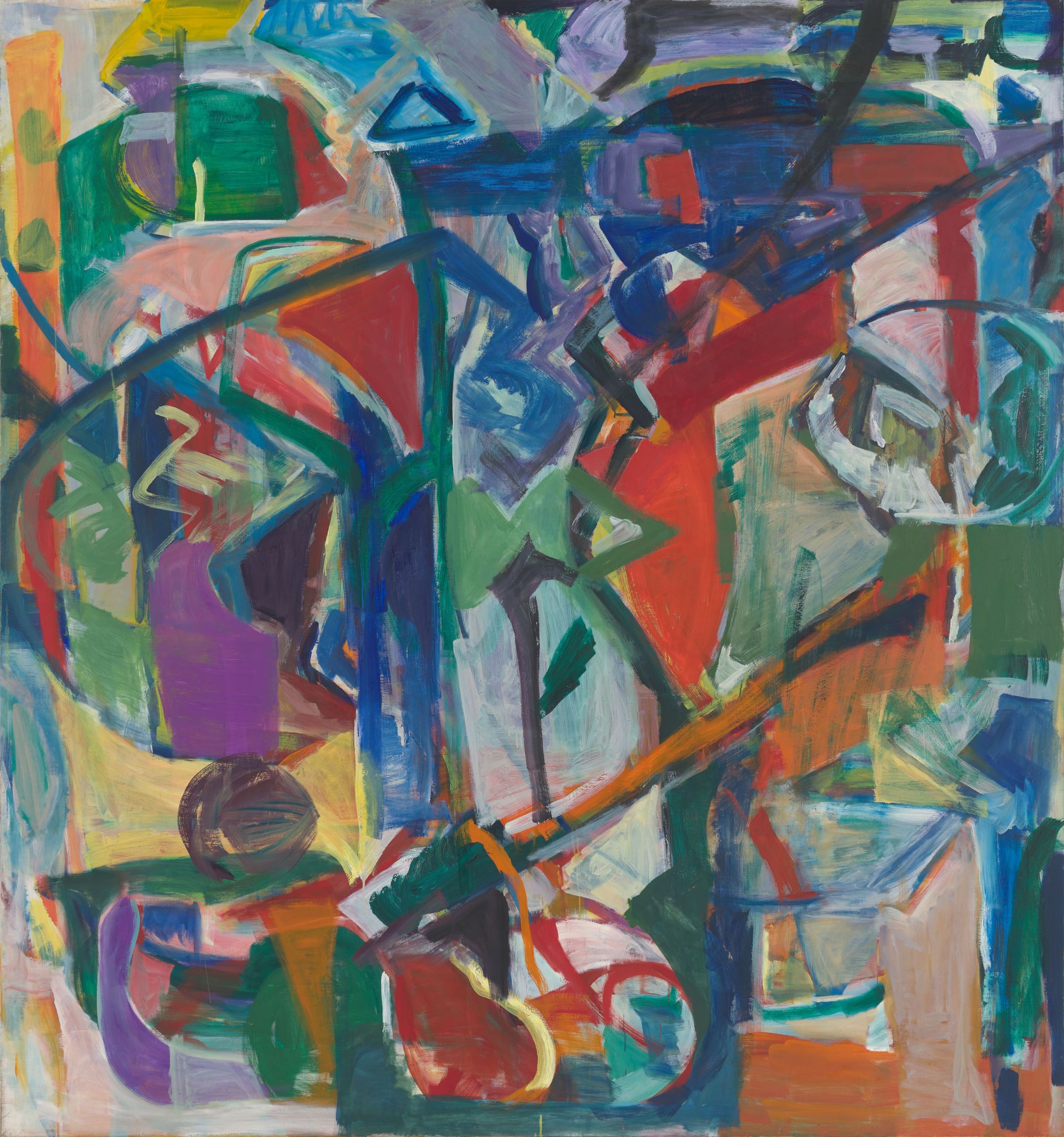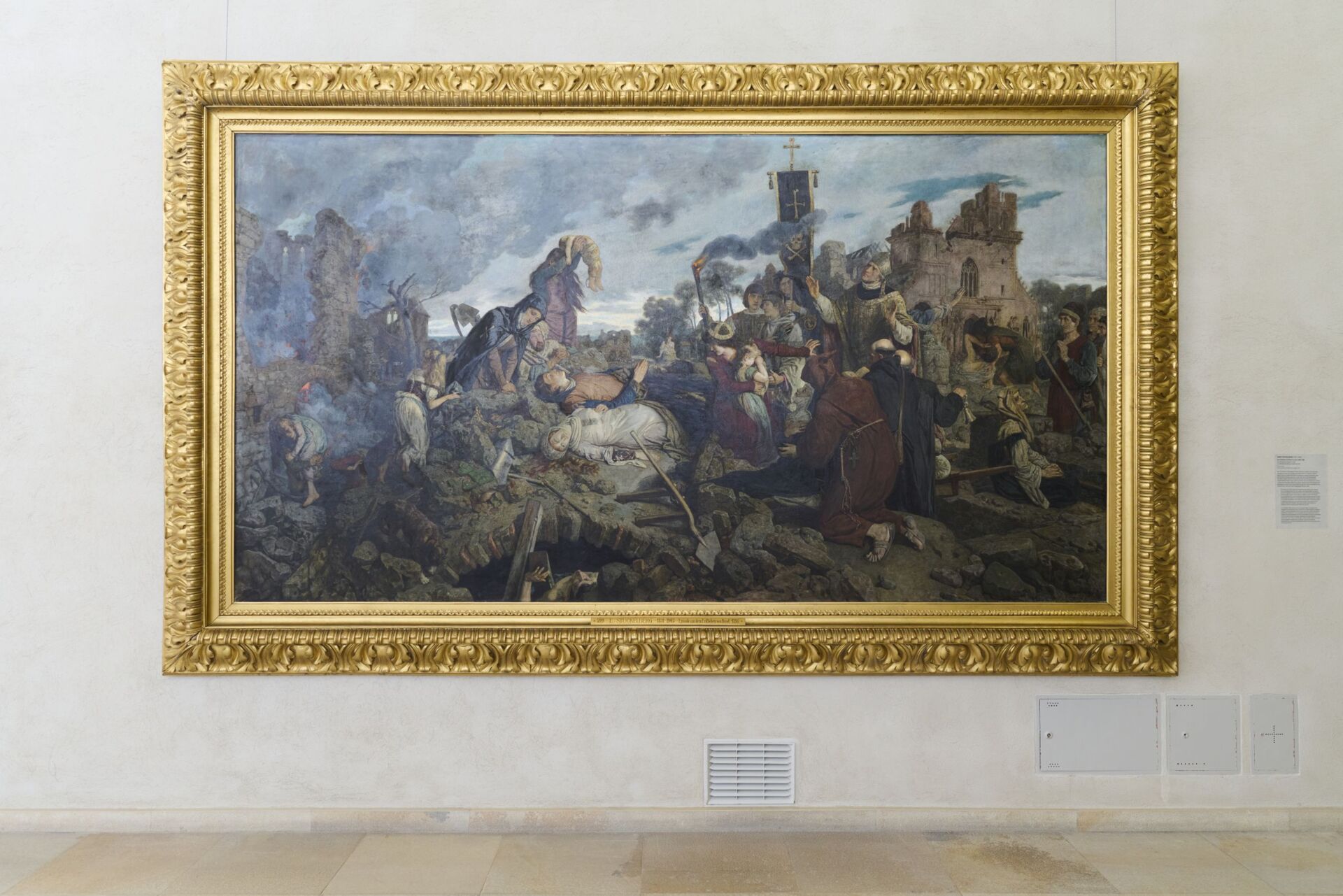Size Matters
Creating a large work of art is no small feat. An artist’s studio must, first of all, be spacious enough. The work may not fit on an easel or, once completed, be able to pass through the studio door. Up until the 19th century, the mere acquisition of a canvas beyond standard dimensions could be a challenge.

Shirley Jaffe, Big Square, um 1965, Kunstmuseum Basel, Purchased with funds from the Arnold Rüdlinger-Fonds of the Freiwilligen Akademischen Gesellschaft, Basel 2022 © 2025, ProLitteris, Zurich, Photo: Max Ehrengruber
Yet apparently, art sometimes demands a certain size. Ernst Stückelberg’s 1886 work, for example, conveys across its two by three meters the enormous historical and emotional significance of the worst catastrophe that ever befell Basel, and in 1965 Shirley Jaffe chose a format that permitted her to channel her entire body’s energy into her painting.
Expansive and ambitious, “great” in several senses of the word, the thirty imposing works from the Kunstmuseum’s collection on view here provide insight into some of the manifold motivations for producing large format artworks.

